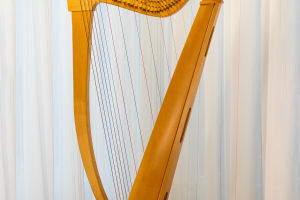Musical instruments are an important part of human cultural history. They not only provide beautiful music but also reflect human understanding and exploration of sound.
The sound production principle of musical instruments involves scientific knowledge in many fields such as audio signals, and sound wave propagation.
This article will explore the sound production principles of various types of musical instruments and provide an in-depth explanation of the science behind them.
1. Wind instruments
Flutes, saxophones, and trumpets harness the resonance of air columns to produce sound.
When a player blows air into the tube, the airflow creates a steady wave inside the tube. By controlling the speed and direction of the mouth and airflow, the player can change the vibration frequency of the air column within the tube, thereby producing notes of different pitches.
2. Stringed instruments
Violins, guitars, and cellos evoke their enchanting sounds through string vibration.
When a player plucks or bows the strings, they set off vibrations that traverse through the instrument's body and manifest as sound waves. The pitch and timbre of the note are modulated by the frequency and intensity of the string vibrations, controlled by the player's finger position and pressure.
3. Percussion instruments
The sound production principle of percussion instruments such as drums and pianos mainly involves the vibration of solid objects.
When a player strikes the surface of the instrument with their hands, drumsticks, or other objects, the surface of the instrument vibrates. These vibrations travel through the structure of the instrument and are ultimately transformed into sound. Instrument surfaces of different shapes, materials, and tensions produce sounds with different timbres.
4. Keyboard instruments
Keyboard instruments such as pianos and synthesizers combine characteristics of string and percussion instruments.
Inside a piano, a set of strings is struck or released when keys are pressed, causing them to vibrate and produce sound amplified by the piano's resonant body. Synthesizers, on the other hand, electronically mimic the sounds of various instruments.
5. Brass Instruments
Brass instruments like clarinets involve airflow vibrations.
By controlling oral and embouchure techniques, players adjust the speed and pressure of the airflow to create vibrations within the instrument's resonating chamber. These vibrations are then amplified and modified by the instrument's resonating chamber to produce sound.
In short, the scientific principles behind the sound produced by musical instruments are multifaceted. By in-depth understanding of these principles, we can better master the playing skills of musical instruments, design more excellent and diverse musical instruments, and promote innovation and development of sound technology in various fields.

